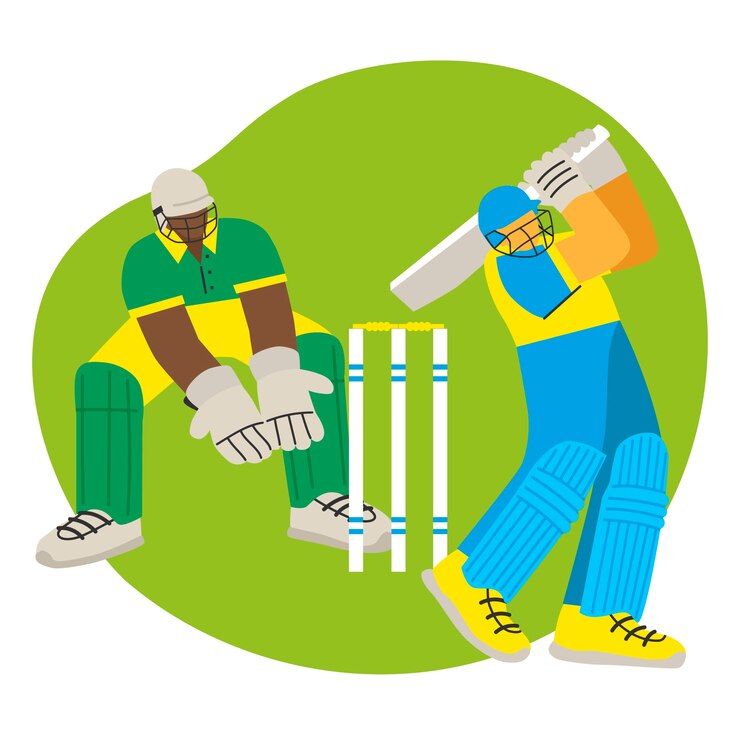History Of The Indian Cricket Team Up To 2000
Apr 11, 2024 • 8 views

In 1931, the Indian cricket team participated in its first Test match. It has subsequently been listed in the ICC rankings from 2005 to 2008 as one of the top four Test teams. In 1983 and 2011, the squad won the World Cup in ODI cricket. Among their other notable international victories were the 2007 Twenty20 World Cup and the 2013 ICC Champions Trophy for Team India.
History of cricket
European merchant seamen brought cricket to India in the eighteenth century, and the first cricket club was established in 1792. India had to wait nearly 20 years, from 1932 to 1952, to win a Test match. India was among the worst sides in the first fifty years of cricket as an international sport, winning just 35 of the first 196 Test matches. However, the arrival of players like Gavaskar, Vishwanath, and Kapil Dev in the 1970s gave the squad a boost.
Thanks to the development of cricket, cricket betting has become popular. Even though the Indian team was weak, people continued to hope and bet on the Indian cricket team T20 World Cup.
India, captained by Kapil Dev, won their first World Cup in 1983. Among the best Indian players of all time, Tendulkar, Ganguly, Dravid, and Kumble made their debuts in the 1980s and 1990s.
Indian cricket is said to have changed significantly during Vijay Ganguly's leadership, as he became a huge success and one of the dominating teams. MS Dhoni's captaincy followed as India won the Champions Trophy in 2013, their first T20 World Cup in 2007, and their second World Cup in 2011. Virat Kohli is the captain at the moment in every format.
Test status (1932–1970)
Long before Indian independence, in 1932, under S.K. Nayudu's guidance, India played its first Test match in England. Mohammad Nissar took 5-93 and 1-42 versus England, although the team played well. Despite barely lasting three days, the match was granted test status.
In 1948, the squad played their debut game in Brisbane against Australia as an independent nation. Lala Amarnath led India, and Sir Don Bradman led Australia. After winning the five-match Test series 4–0, the Australians headed home.
India defeated England in their very first Test match in Madras in 1952. Later the following year, against Pakistan, the series was won. India and Pakistan drew the five-test series 0–0 in 1954.
India won the 5-Test series 2-0 after securing a comprehensive series victory in their maiden series against New Zealand in 1956. India's performance towards the end of the 1950s was not as good as it was at the start: they lost both the 3-Test series against Australia (2-0) and the 5-Test series against the West Indies (3-0).
After their first series victory against England in 1961–1962, the team's performance started to improve once more in the 1960s. During this period, India started to establish a solid home record, winning the series against New Zealand in 1965–1966 and tying with Pakistan, Australia, and England. India defeated New Zealand in 1967–68 to win their first series outside of the subcontinent.
How else did cricket fans entertain themselves when there were no cricket matches?
For some, betting on cricket was a way to earn extra money; casinos have always been an alternative to betting. Fortunately, currently, you do not need to look for a casino in your city, but you can download the application and play casino app games.
One-day success at the Cricket World Cup (1970–1985)
In 1970–71, Sunil Gavaskar made his debut for India in the West Indies and immediately left an impression, amassing 774 runs over the series. Gavaskar was a key member of what was perhaps India's best Test team, together with seasoned players like Bhagwat Chandrasekhar, Srinivas Venkataraghavan, Erapalli Prasanna, and Bishen Bedi. India's triumph over the West Indies was followed by triumphs against England both at home and away in 1971 and 1972–1973.
In a nail-biting final match, India defeated the West Indies to win the 1983 Cricket World Cup.
Late 20th century (1985–2000)
An age of stars and individual brilliance dominated Indian cricket began in 1989 and 1990 with the rise of Sachin Tendulkar and Anil Kumble. Together with West Indies batsman Brian Lara, Sachin Tendulkar rose to become one of the top batsmen in the world; in 1998, Sir Donald Bradman himself said that Tendulkar's batting approach resembled his own.
The Indian squad was in motion by the end of 1999. Despite their strong performance in the 1999 World Cup, the Indian team's deficiencies in international matches were highlighted during a terrible visit to Australia over the winter, which was accompanied by a slump in form for most of their batters.
